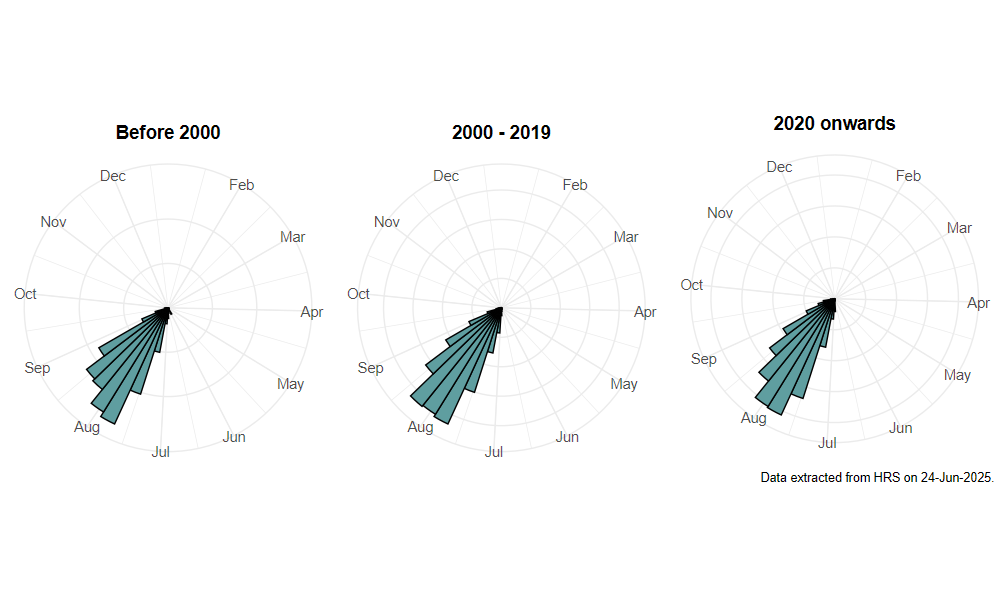Volucella inanis (Linnaeus, 1758)
Identification
Identification difficulty = 2. ![]()
![]() according to Ball & Morris, 20241
according to Ball & Morris, 20241
Biology
The larva is an ectoparasite of social wasp larvae, and has been found in association with Vespula germanica and Vespa crabro. They are, unlike any other member of the genus, very flattened so that they fit into the larval cells beside the wasp grubs on which they feed. Found in open areas in woodland and scrub and, most frequently, in suburban areas, in parks and gardens. Adults are usually seen visiting flowers, especially white umbels and the Butterfly Bush Buddleja davidii.
Flight period
The following plots show the number of unique records per week excluding those reported to be of immature stages.

Status
Was listed as 'Notable' by Falk, 19912, but dropped from this status by Ball & Morris, 20143 who consider it LOWER RISK.
Distribution
This species has undergone rapid range expansion since about 1995. This expansion has been most marked on the eastern side of England. The loss of range in the south west during the 1960s has not yet fully recovered, although there are signs that this is now happening. The main population was formerly centred on London and counties to the south and east but today it occurs north to West Yorkshire. This is one of a small suite of species that are responding to warmer summers and winters.

Trends
The following plots show the Frescalo TFactor vs year and a map of the rescaled frequency (all records) for the species.
-
Ball, S., & Morris, R. (2024). Hoverflies of Britain and Ireland. WILDGuides (3rd ed.). Oxford: Princeton University Press. ↩
-
Falk, S. (1991). A review of the scarce and threatened flies of Great Britain. ( No. 39). Research and Survey in Nature Conservation (pp. 1–194). Peterborough: NCC. ↩
-
Ball, S., & Morris, R. (2014). A review of the scarce and threatened flies of Great Britain. Part 6: Syrphidae. ( No. 9). Species status (pp. 1–130). Peterborough: JNCC. ↩